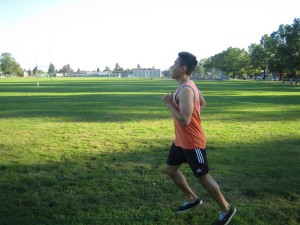The tendons are described as bands of connective tissues that connect muscles to bones. The Achilles tendon is responsible for connecting the two large-sized muscles in the calf to the bones in the heel. Take note that the heel muscles help with walking as well as allowing the foot to push up from the ground. When it comes to Achilles tendinitis, it is a condition that develops once the Achilles tendon becomes swollen or inflamed.
https://www.youtube.com/watch?v=p5vnf0VLvxQ
What are the types?
There are two types of Achilles tendinitis – non-insertional and insertional. When it comes to non-insertional Achilles tendinitis, it affects the fibers in the central part of the Achilles tendon and the symptoms are usually seen right above the heel area.
With this type Achilles tendinitis, it typically affects young individuals who are active. As for insertional tendinitis, it involves the lower part of the heel where the Achilles tendon physically connects to the heel bone. In addition, this form of Achilles tendinitis can affect individuals of all ages and activity levels.
Causes

The usual causes of Achilles tendinitis include overuse of the tendon due to constant movement or severe strain on the muscles by engaging in repetitive physical activity. Any abnormalities with the anatomy such as flat feet can also contribute to the development of Achilles tendinitis. Among the elderly, they usually develop Achilles tendinitis as a complication of arthritis.
Signs and symptoms
Always bear in mind that pain is the initial indication of Achilles tendon inflammation. In most cases, the pain typically starts as minor irritation and gradually worsens as the inflammation intensifies. The stiffness and tenderness often occur along with the pain especially when waking up. Among those who have Achilles tendinitis, they also end up with weakness in the leg muscles.
Treatment
The non-surgical home treatments measures are usually effective in minimizing the inflammation of the Achilles tendon. The self-care measures include resting the affected leg, application of ice, compression using an elastic bandage and elevation of the affected feet higher than the level of the heart.
In case the pain is severe, prescription pain medications can be given to reduce it. In case self-care measures are not effective, corticosteroids might be injected directly into the affected joint. In severe cases, surgery might be required to effectively manage the condition.
Possible complications
Achilles tendon inflammation can often lead to severe conditions such as Achilles tendinosis that is characterized by structural changes in the tendon. In most cases, this weakens the tendon and makes it susceptible to injury. When an individual ends up with a ruptured Achilles tendon, a physical tear can also occur. If an individual ends up with a ruptured tendon, the doctor will surely recommend surgical repair to properly deal with the injury.
